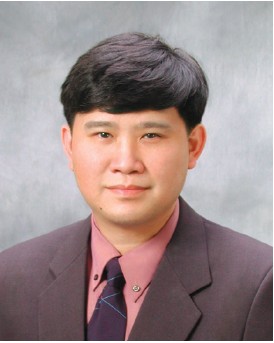Late Anterior Hip Dislocation after Metasul Metal-on-Metal Total Hip Arthroplasty for 13 Years: A Case Report
Main Article Content
Abstract
Hip dislocation after total hip arthroplasty can be classifi ed into anterior and posterior dislocation, and immediate post-op and late dislocation. The most common dislocation is posterior dislocation which depends on a primary surgical approach because the resection of the posterior capsule takes part in the direction of hip dislocation. However, surgical technique, components orientation and soft tissue tension have a major role in hip stability. We report a case of a 52-year-old man who suffered from an unstable hip after having a normal hip functional score for 13 years without any traumatic events. Radiographic fi ndings did not show any sign of loosening or radiolucency. The causes of late hip dislocation and treatment are also described.
Article Details
This is an open access article distributed under the terms of the Creative Commons Attribution Licence, which permits unrestricted use, distribution, and reproduction in any medium, provided the original work is properly cited.
References
2. Brown SR, Davies WA, DeHeer DH, et al. Long-term survival of McKee-Farrar total hip prosthesis. Clin Orthop Relat Res 2002;402:157-63.
3. Ring PA. Press-fit Prosthesis Clinical Experience. In Freeman MAR, Reynolds DA (eds) Osteoarthitis and the Young Adult Hip. Edinburgh: Churchill Livingstone, 1989:220-32.
4. Eswaramoorthy V, Moonot P, Kalairajah Y, et al. The Metasul Metal-on-Metal articulation in primary total hip replacement: clinical and radiological results at ten years. J Bone Joint Surg Br 2008;90:1278-83.
5. Delaunay CP, Bonnomet F, Clavert P, et al. THA using Metal-on-Metal articulation in active patients younger than 50 years. Clin Orthop Relat Res 2008;466:340-6.
6. A Grubl, C Chiari, M Bruber. Cementless total hip arthroplasty with a taperd, rectangular titanium stem and threaded cup. A minimum ten-year follow up. J Bone Joint Surg Am 2002; 84:425-31.
7. Zweymuller KA, Steindl M, Schwarzinger U. Good stability and minimal osteolysis with a biconical threaded cup at 10 years. Clin Orthop Relat Res 2007;463:128-37.
8. De Haan R, Pyttyn C, Gill HS. Correlation of inclination of acetabular component and metal ion levels in metal-on- metal hip resurfacing replacement. J Bone Joint Surg Br 2008;90:1291-7.
9. Jin ZM. Analysis of mixed lubrication mechanism in Metal-on-Metal hip joint replacements. Proc Inst Mech Eng H 2002;216:85-9.
10. Chan FW, Bobyn JD, Medley JB, et al. The Otto Aufranc Award. Wear and lubrication of metal-on-metal hip implants. Clin Orthop Relat Res 1999;369:10-24.
11. Streit MR, Schröder K, Körber M, et al. High survival in young patients using a second generation uncemented total hip replacement. Int Orthop 2012;36:1129-36.
12. Hwang KT, Kim YH, Kim YS, et al. Total Hip Arthro- plasty Using Cementless Grit-Blasted Femoral Com- ponent: A Minimum 10-Year Follow-Up Study. J Arthro- plasty 2012;27:1554-61.
13. de Witte PB, Brand R, Vermeer HG, et al. Mid-term results of total hip arthroplasty with the Cement- Less Spotorno (CLS) system. J Bone Joint Surg Am 2011;93:1249-55.
14. Müller LA, Wenger N, Schramm M, et al. 17-year follow-up of the rough-blasted threaded Weill cup in uncemented total hip arthroplasty. Arch Orthop Trauma Surg 2011;131:557-61.
15. Terré RA. Estimated survival probability of the Spotorno total hip arthroplasty after a 15- to 21-year follow-up: one surgeon’s results. Hip Int 2010;20:70-8.
16. Goergen TG, Resnick D. Evaluation of acetabular anteversion following total hip arthroplasty: necessity of proper centering. Br J Radio 1975;48:259-60.


